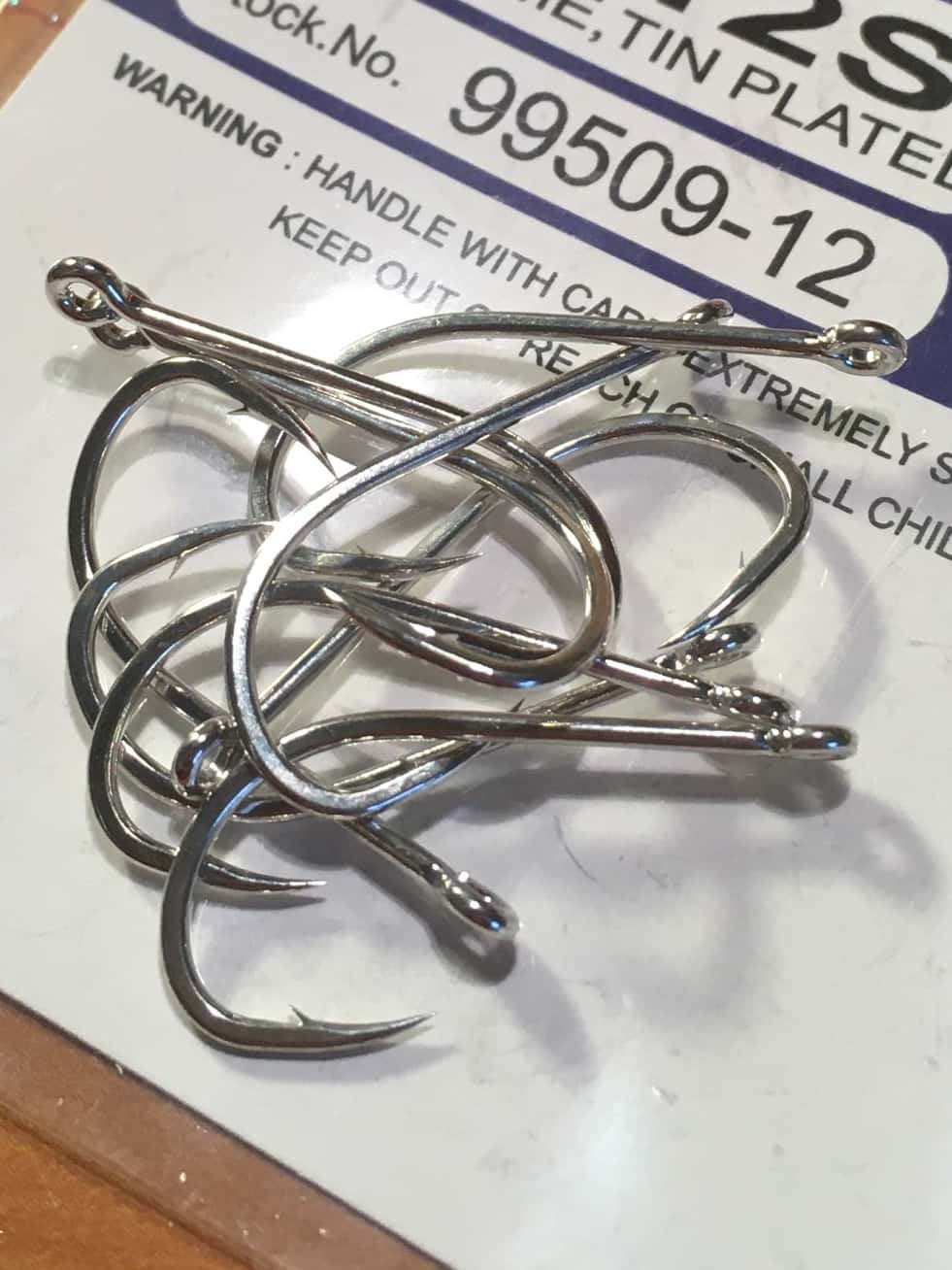
Investing in high-quality hooks and making sure they stay sharp a great ways to help every snap of the rod connect with a fish. Simonson Photo.
By Nick Simonson
Whether in winter or summer or fishing opportunities in between, when it comes down to it, the hook point is where the business of catching fish happens.
Having a sharp and stable hook on a spoon below the ice, a crankbait behind the boat, or a fly adrift in a riffle is key in connecting with fish of any species. What follows are a handful of tips to make sure hooks are at their best so you can be certain of every connection.
1. Invest in Quality. Like rifles, optics, rods and just about every other outdoors equipment market, hooks have their sliding scale running from inexpensive to intermediate to premier options, each with its pros and cons and varying levels of sharpness. Whether it’s tying flies, buying jigs or replacing trebles on store-bought jerkbaits, there are high-end and low-end hooks available and it’s the former that should be considered when looking to upgrade standard offerings or craft a jig to hit those favorite walleye waters.
While it’s up to the user to make a determination as to what brands are the best (try buying a few different makes throughout a season and getting a sense for the sharpness of each) it usually doesn’t take long to find those that are just sharper and better setting. Keep those brands at the top of the list and rely on them as, while they may be more expensive than their competitors, they’re probably the least costly (and arguably most important) part of any fishing set up.
2. Make the Switch. Utilize those preferred hooks on baits that come fresh out of the box, unless it’s common knowledge those lure brands use a chosen style of premium hook. A six-dollar split-ring pliers will make short work of swapping out trebles on a crankbait or spoon and is a worthwhile investment to keep in a tacklebox for on-the-water work if hooks become blunted or dull. Never assume the hooks on a bait fresh off the tackleshop shelf are sharp and replace them or sharpen them if necessary. Confirm hook sharpness out of the bock by testing them out before tying them on the line and swap with a chosen favorite as desired.
3. The Test. Test each hook and its point by utilizing the fingernail method. Simply place the point of a hook at a 45-degree angle to a fingernail and gently drag it across the surface. If the hook sticks a little and leaves a white line scraped on the nail, it’s sharp enough to catch fish. Repeat the process on the water especially after catching a number of fish or working baits through rocky or snaggy stretches which may dull the hook point. Remember, if the hook slides off without making a mark, it needs sharpening, so focus on getting it to that point.

4. Sharpen Up. When replacement hooks aren’t handy, be certain to stash a hook hone or file in the tacklebox to gently reshape and sharpen those hook points that get blunted or become dull. Working the file along the angles of the hook and using a finer edge to touch up the point of the hook will help extend the life of the lure and keep things sharp for the next bite. Know when to say when though and recognize that no amount of field surgery can save some bent or blunted hooks. Additionally, those light wire hooks that lose their original bend from getting snagged and pulled loose may also need to be replaced as the shank weakens or takes on a wider U-shape.
5. Look at the Eye. Finally, be certain that knots are setting properly on the eye of every hook or jig for the best presentation and the ideal drive of the point into a fish’s mouth on the strike. Check to be certain that knots made with superlines – which are capable of sliding through the smallest gaps on wire hooks – are positioned where they won’t be ripped through those tiny spaces on a powerful hookset. Be certain all paint, burs, dried epoxy and other possible obstructions which could cut or damage line have been cleaned out of the eye of a hook, jig or fly for the best possible hookset.
By investing a few extra cents in a better hook and a few moments to make sure every offering hits the water with the sharpest point possible and the best possible setup, better success is guaranteed. Whether ahead of an outing or waiting for a season to start, any time is a good time to get a handle on hook sharpness.

